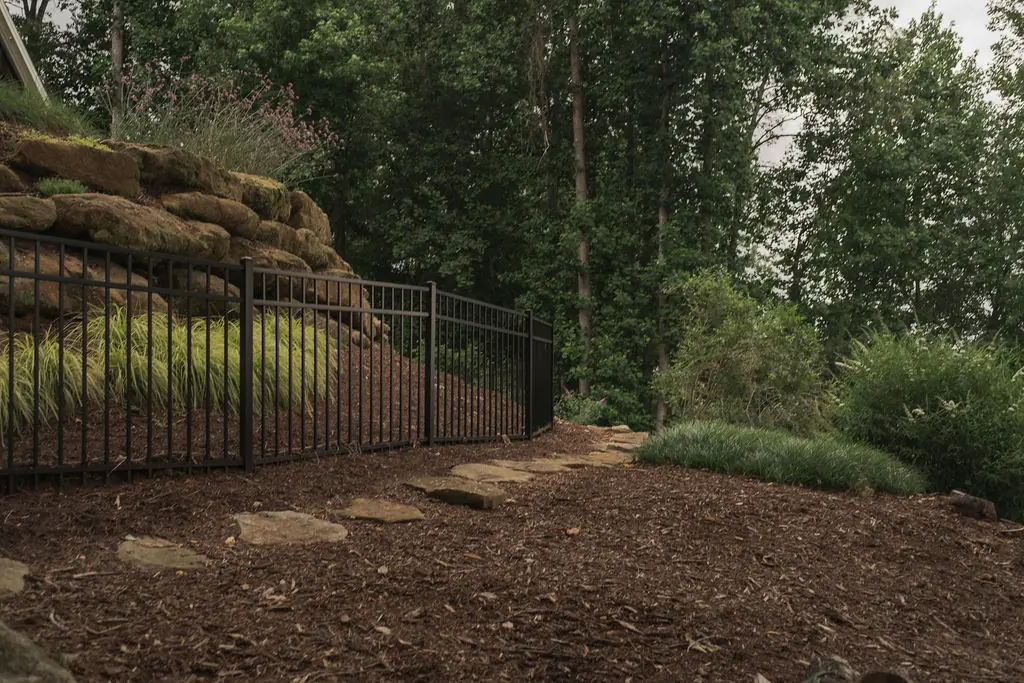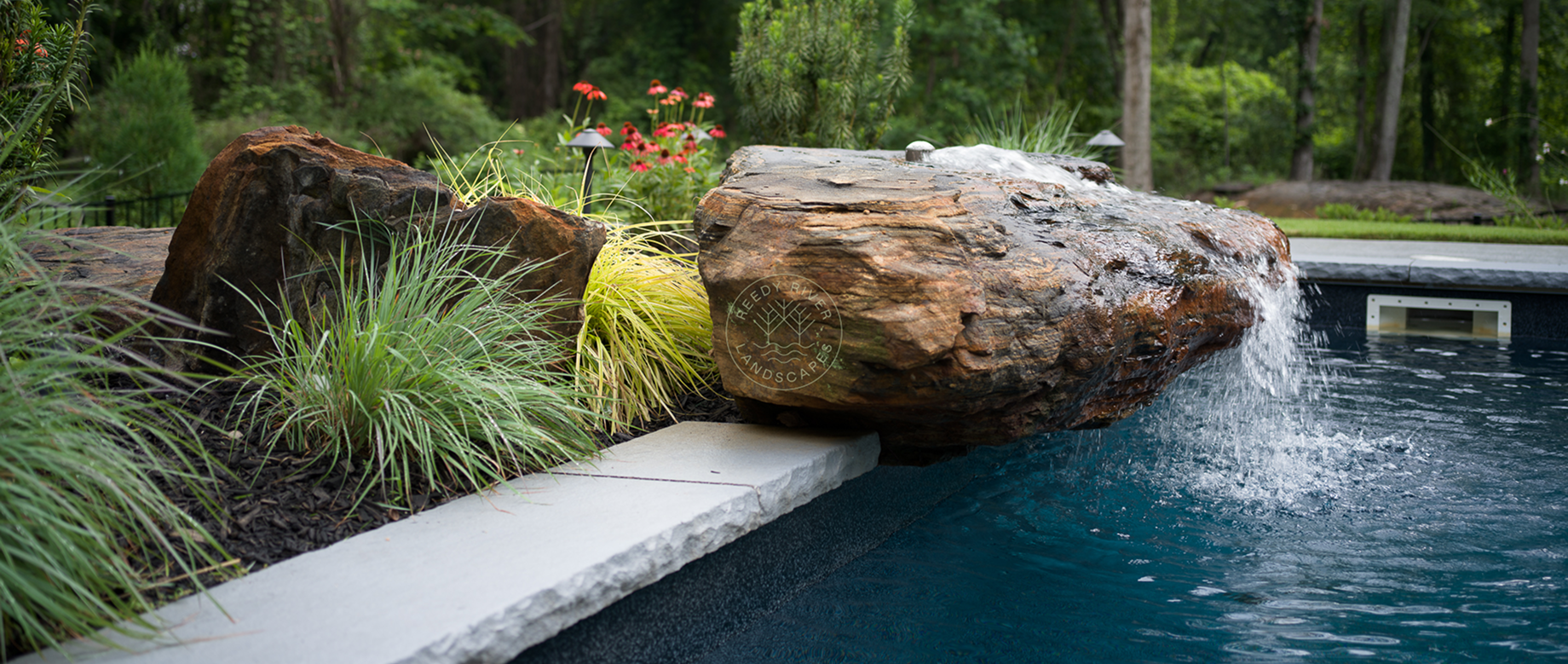Asheville Hardscape Services: Building Patios, Walkways, and Walls
Asheville Hardscape Services transform mountain landscapes with expertly built patios, walkways, and retaining walls. Professionals ensure erosion control, proper drainage, durable materials, and timeless outdoor living spaces that enhance beauty and value.

Your Asheville yard should be as inviting as the mountain views that surround it. Yet steep slopes, clay soil, and heavy rains can make landscaping tricky. That’s where Asheville Hardscape Services come in.
Professional hardscape design and installation transform outdoor spaces into functional, long-lasting, and beautiful areas for gathering, relaxing, or simply enjoying your view. From patios and walkways to retaining walls and terraces, well-planned hardscaping brings structure and stability to your landscape while boosting curb appeal and property value.
In this guide, you’ll learn:
- What hardscaping is and why it matters in Asheville
- How patios, walkways, and walls enhance outdoor living
- The best materials and designs for local conditions
- Cost expectations and contractor tips
- Maintenance advice for long-term beauty and strength
What Is Hardscaping?
Hardscaping refers to the non-living features of your landscape—stone, concrete, brick, or wood structures that shape your outdoor environment. This includes:
- Patios for outdoor dining or lounging
- Walkways that connect garden areas and entries
- Retaining walls that stabilize slopes
- Steps, edging, and fire pits that add form and function
In contrast, softscaping includes lawns, plants, and trees. Together, they create balance: softscaping adds life and texture, while hardscaping provides structure and usability.
Why Hardscape Matters in Asheville’s Terrain
Asheville’s mountain geography creates both beauty and challenges. The region’s sloping lots, heavy clay soils, and seasonal freeze-thaw cycles require professional design to prevent erosion, drainage issues, or wall failure.
Benefits of Hardscaping for Asheville Homes:
- Controls erosion and runoff on hilly sites
- Prevents water pooling near foundations
- Creates level, usable outdoor areas
- Adds long-term value and low maintenance
Properly installed hardscape features don’t just look great—they protect your property for years to come.
Popular Hardscape Features in Asheville
1. Patios & Outdoor Living Spaces
A well-designed patio becomes an outdoor room. Whether you prefer flagstone, travertine, or concrete pavers, patios provide the perfect base for dining sets, fire pits, and seating walls.
2. Walkways & Garden Paths
Walkways made of stone or pavers improve navigation, reduce mud, and connect driveways, gardens, and patios. Curved paths with lighting add safety and style.
3. Retaining Walls & Terraces
Retaining walls are vital for slope control. They prevent soil movement and can double as decorative seating or planting borders. Many Asheville homes use dry-stack stone or engineered block walls for both beauty and function.
4. Steps, Fire Pits & Outdoor Kitchens
Combine steps with landings, or add a built-in fire pit for warmth and charm. Asheville’s outdoor culture makes these features especially popular for year-round enjoyment.
Best Materials for Asheville Hardscapes
Choosing the right materials ensures your hardscape stands up to the local climate.
Natural Stone
Locally sourced flagstone, gneiss, and quartzite are durable, slip-resistant, and naturally complement the mountain aesthetic.
Concrete Pavers
Modern interlocking pavers offer design flexibility, consistent patterns, and a variety of colors—perfect for patios and driveways.
Dry-Stack vs. Mortared Walls
- Dry-stack stone allows drainage and adapts to freeze-thaw cycles.
- Mortared stone provides a more polished look but needs a solid foundation.
Permeable Options
Permeable pavers and gravel joints let water pass through, reducing runoff and supporting Asheville’s sustainability goals.
Design & Engineering Considerations
A successful hardscape balances beauty and structural soundness.
- Grading & Drainage: Proper slope prevents puddles and wall pressure.
- Footings & Base: Walls over 4 feet often require engineered designs and permits.
- Edge Restraints: Prevent pavers from shifting over time.
- Integration with Plants: Blend hard edges with native plantings for a softer, natural look.
Each detail—from compaction depth to stone thickness—affects how long your investment lasts.
Choosing the Right Hardscape Contractor
A reliable contractor makes all the difference.
Checklist before hiring:
- Experience with mountain terrain and drainage solutions
- Portfolio of completed Asheville projects
- Clear warranty on workmanship
- Transparent pricing and written contracts
Ask about their base preparation methods, compaction standards, and drainage strategies—these define long-term quality more than stone choice alone.
Step-by-Step Installation Process
- Site Evaluation – Measure slopes, identify drainage routes, and mark utilities.
- Excavation & Base Prep – Remove topsoil and compact crushed gravel.
- Laying Stone or Pavers – Install with precision for tight joints and level surface.
- Edge & Drainage Systems – Add restraints and sub-drains where needed.
- Finishing Touches – Apply polymeric sand, clean surfaces, and install lighting or seating.
Attention to detail here ensures your patio or wall remains level, stable, and visually appealing for decades.
Maintenance Tips for Long-Lasting Results
- Sweep and rinse surfaces regularly.
- Inspect joints each season and reapply sand if needed.
- Seal stone every 2–3 years to prevent stains and moisture damage.
- Trim nearby plants to prevent them overtaking the space.
- Check drainage after heavy rain to ensure proper flow.
These small steps help your hardscape maintain its strength and beauty year after year.
Common Mistakes to Avoid
- Skipping a compacted base layer
- Ignoring slope and water flow
- Choosing the wrong stone type for freeze-thaw conditions
- Not budgeting for drainage or wall engineering
- Hiring unqualified labor without insurance
Cutting corners early often means costly repairs later.
Sustainable & Eco-Friendly Options
Green hardscaping supports Asheville’s natural beauty:
- Use reclaimed stone for character and reduced waste.
- Add permeable pavers for stormwater control.
- Pair with native plants to minimize irrigation.
- Consider rain gardens to catch runoff from patios.
A sustainable design protects both your property and the local watershed.
Return on Investment & Curb Appeal
High-quality hardscapes often return 60–80% of their cost at resale.
Patios and stone walkways increase usable space, while well-built retaining walls boost curb appeal and landscape functionality.
Homebuyers love outdoor living areas that feel like natural extensions of the home—making hardscapes one of the most rewarding upgrades you can choose.
Permits and Local Regulations
In Buncombe County and the City of Asheville:
- Walls taller than 4 feet require engineering and permits.
- Drainage changes may need inspection or stormwater approval.
- Property line setbacks can affect wall placement.
Your contractor should handle this paperwork, but always confirm compliance before breaking ground.
Key Takeaways
- Hardscaping adds function, beauty, and durability to Asheville homes.
- Drainage and slope design are critical for long-term success.
- Choose materials that fit both your style and the mountain climate.
- Work with an insured contractor experienced in structural builds.
- Maintain regularly to protect your investment.
Conclusion
Your outdoor space deserves more than just plants—it deserves structure, purpose, and artistry. Asheville Hardscape Services bring all three together, crafting patios, walkways, and walls that blend with the natural landscape while standing strong against the region’s demanding conditions.
Whether you want a quiet stone patio overlooking the hills or a full outdoor kitchen built into your slope, professional hardscaping turns your vision into a functional retreat you can enjoy for decades.
Ready to elevate your landscape? Contact Reedy River Landscapes to start your Asheville hardscape project today.
FAQs
1. What’s the best time of year to install hardscapes in Asheville?
Spring and early fall are ideal—temperatures are mild, and ground conditions are stable for compaction and curing.
2. How long does a typical hardscape project take?
Small patios may take 3–5 days, while multi-tiered walls or large patios can take 2–3 weeks, depending on weather.
3. Do I need a permit for a retaining wall?
Yes, walls over 4 feet tall or supporting structures generally require engineering and county approval.
4. Can hardscapes handle Asheville’s freeze-thaw cycles?
Absolutely—with proper base, drainage, and frost-resistant materials, your hardscape will endure for decades.
5. How often should I reseal my patio?
Every 2–3 years for natural stone; concrete pavers may go 4–5 years between sealing, depending on exposure.

